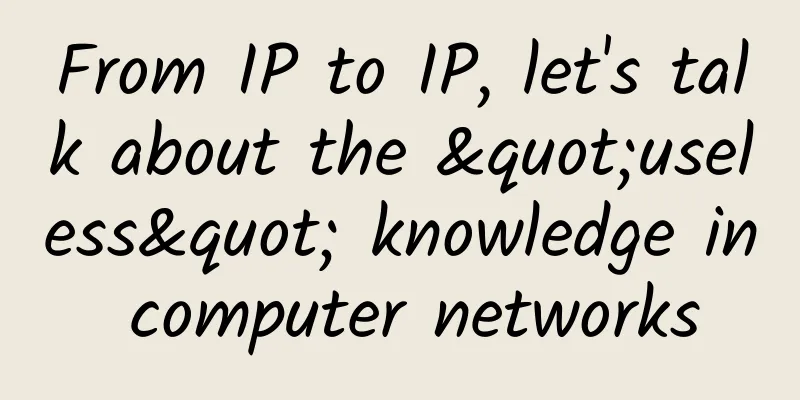In order to improve network reliability, do you know how hard we work on protecting the OTN optical layer?

|
Optical fiber is an important part of communication transmission. When the optical fiber is broken, it needs to be manually reconnected in an unprotected state. The process will last from several minutes to tens of minutes, seriously affecting information transmission. OTN optical layer protection can realize automatic protection switching of services within 50 ms, improving network reliability and disaster recovery capabilities of equipment. For a detailed introduction to OTN, please read "Large-capacity transmission technology of network data - WDM/OTN, do you know it?" . 1. Implementation PrincipleLet's first take a look at how OTN optical layer protection is implemented. OTN optical layer protection is mainly implemented through "concurrency and preferential reception". Concurrency means sending at the same time. Preferential reception means receiving the best. The transmitter sends two signals at the same time, through two different channels. The receiver compares the received signals and selects the signal with better quality from the two channels to receive. When a fault occurs on the selected working path, the service receiving end performs fault detection and then switches the service to the protection path for protection. Since the services are all bidirectional, switching includes unidirectional switching and bidirectional switching. Unidirectional switching: When a unidirectional fault occurs (i.e., the fault affects only one direction), only the affected end is switched. Bidirectional switching: When a unidirectional fault occurs, both the affected and unaffected ends will be switched. After the switchover, if the working channel returns to normal, you can also choose whether to return to the working channel. Non-return type: After the working channel returns to normal, the service signal that has been switched to the protection channel does not return to the working channel and is still transmitted on the protection channel. Return type: When the working channel returns to normal, the service signal will return to the working channel for transmission. 2. Protection TypeOTN optical layer protection provides optical layer protection at all levels and briefly explains the wavelength division optical layer structure. For detailed information about the OTN layered structure, please read Just by looking at these three pictures, you can understand the OTN layered structure. It can be seen that:
Therefore, for the above optical layer structure, there are three types of protection: optical transmission section protection, optical multiplexing section protection and optical channel protection. Optical transmission section protectionOptical transmission segment protection, also known as optical line protection, protects the optical fiber between two adjacent optical amplifier (OA) sites. In other words, a spare optical cable is used to protect a section of working optical cable that is easily damaged. Optical Multiplex Section ProtectionOptical multiplexing section protection, based on the optical transmission section protection, adds the protection capability for optical amplifier (OA) sites. Optical channel protectionOptical channel protection mainly protects single-channel services, and also has the ability to protect optical layer boards such as wavelength combination and decomposition boards and optical amplifier (OA) sites. According to the usage of service boards, the optical channel 1+1 protection application scenarios are divided into two types: service board redundant configuration and service board shared configuration. Service board sharing: The working channel and protection channel share the service board. Service board redundancy: There is one service board on each working channel and protection channel. Well, the introduction to OTN optical layer protection is over. OTN optical layer protection enables rapid service recovery and plays an extremely important role in avoiding long-term network interruptions. Finally, I would like to present the summary notes to you, as shown in the table below: |
<<: Soul-searching question for TCP: Are you going to surrender?
>>: Three ways hotel Wi-Fi supports remote work
Recommend
Understanding HTTP/1, HTTP/2, and HTTP/3 in one article
1. HTTP1.1 and HTTP2 1. HTTP1.1 flaws High Latenc...
iPhone 12 is coming! What else is there to look forward to besides the new phone?
[[344926]] Apple said on Tuesday that it will hol...
Warning to enterprises: Actively deploy IPv6
Enterprises have the resources and the expertise;...
BuyVM management panel Stallion simple use tutorial
I searched the blog and it seems that no one has ...
A 10,000-word article that explains computer networks with pictures!!!
[[383719]] The author has developed a simple, sta...
Five realistic predictions for enterprise IT in 2018
As 2017 is coming to an end, many companies are p...
Tragicservers: $7/year OpenVZ-128MB/10GB/500GB/Los Angeles
It has been more than a year since I shared the n...
Forty-five kinds of traditional knowledge about optical fiber and optical cable
1. Briefly describe the composition of optical fi...
2021: Connectivity disruptors
From 5G to Wi-Fi 6, connectivity is opening up ne...
[Mid-Autumn Festival/National Day] CUBECLOUD: 30% off for Lite series/15% off for Pro series, available in CN2 GIA Hong Kong/CN2 GIA Los Angeles
CUBECLOUD (Magic Cube Cloud) has launched a promo...
2 and a half years have passed since the first year of 5G, but users are still reluctant to upgrade to 5G
[[420026]] Recently, Mobile China learned that ev...
5G industry terminals are launched! 519 5G terminals, 303 of which are commercially available
[[387356]] For the development of each generation...
The strength of the WiFi signal is related to this core factor. Don't get it wrong.
When buying a wireless router, you should buy one...
SDN network architecture: three layers and three interfaces
As we all know, SDN is a network with a separate ...
Feiyuxing Wireless helps the famous Yueyang No. 16 Middle School realize campus informatization construction
The 16th Middle School of Yueyang City, Hunan Pro...









